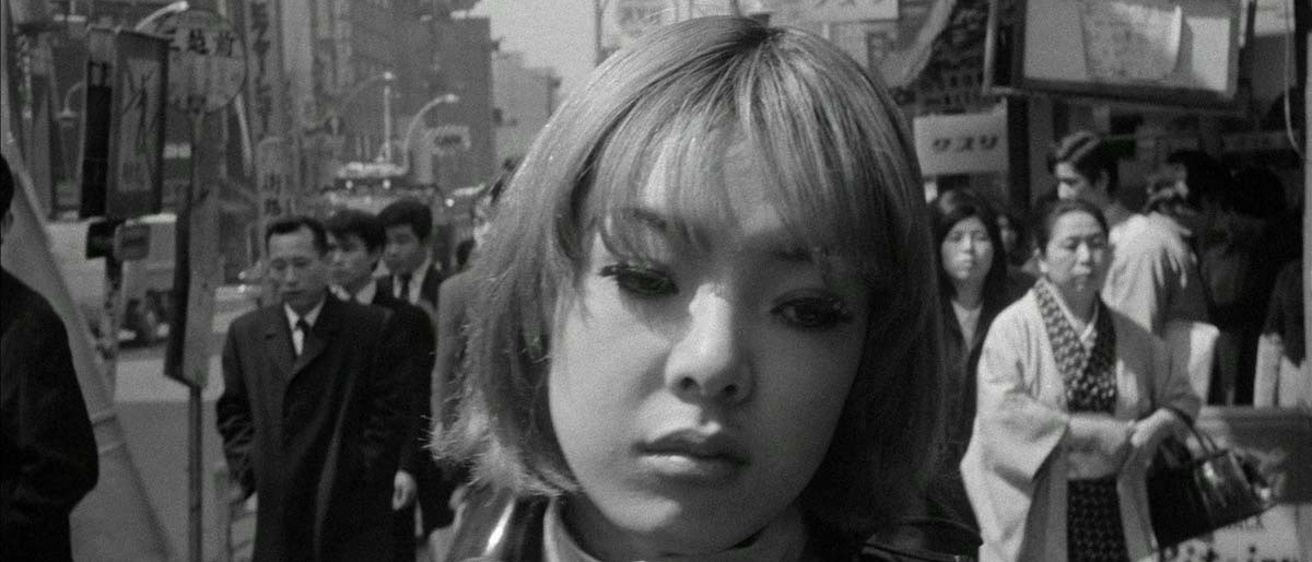Japan is known as a prim and proper country full of salarymen and polite speech, a facade it has lately adopted that covers up a tendency for slow moving equal rights movements, with voting rights for women only being established in 1945. Maid cafes, “kawaii” women who try to seem childlike, and underreported sexual assault cases supports the notion of extreme sexism in Japanese society. Despite these conflicting personas of Japan, Japanese film shines through as a poignant and progressive mode of art for individuals not conforming to any of these stereotypes. Filmmakers- namely Takashi Miike, Kenji Mizoguchi and Toshio Matsumoto have created feminist films that turn female exploitation on its head in extremely different ways.
Sisters of the Gion (1936)
Feminism in Japanese film was a facet as early as 1936, which was when Sisters of the Gion was made. Kenji Mizoguchi is known as a master of women’s despair, and this is seen in the female characters in Sisters of the Gion. There have been many films in which female suffering is utilized by male directors in a shallow attempt at making a statement, but Mizoguchi succeeds due to the depth of Omocha and her sister Umekichi. Omocha and Umekichi live in the lesser section of the Gion, a popular area for geisha, and try to find work as geisha. Since they have fewer patrons and less means, they are both little more than prostitutes, and Omocha scorns her life while Umekichi is more resigned. Omocha is witty and tricks several men into doing her bidding while taking them on as patrons, but it ends up threatening her life later. The helplessness which is inherent in the exploitative world of geisha is represented in this movie, and the lack of glorification elicits sympathy and frustration from the audience.
Funeral Parade of Roses (1969)
This movie is one of the most polarizing Japanese films to date. Detailing the Tokyo underworld and transgender movement of the late 60’s/early 70’s, Funeral Parade of Roses is an experimental film that challenges the delicate exterior that Japanese society upholds through a retelling of Oedipus Rex. This movie is not intrinsically feminist in the plot or the characters, but feminist because it is daring to show the experiences of transgender women in a world that had not yet accepted them. While it seems otherworldly and fantastical, Matsumoto actually was showing aspects of what life is like for marginalized people in Japan. Of course, the main character's life is very dramatic, and she is tragic in a way that is not realistic, but the “gay boy” section of Tokyo as well as the cafes that the transgender women ran in the film were mirrors of popular establishments that are still standing today. Eddie herself is a flawed individual, not just reflecting a preconceived stereotype but a fully fleshed out and complicated person. Another extremely captivating aspect of this movie is the usage of sex. There are various sex scenes and scenes of naked people, but it never seems exploitative because Matsumoto doesn’t use the scenes as gratification for an audience. The scenes are artistic and have a means to an end, and most importantly, the characters within them have agency. Rather than it feeling like you’re watching a private moment not meant for other people to view, it felt like a performance with complete control from the characters.
Audition (1999)
When you compare Takashi Miike’s work, you can see he never makes a similar movie twice. This is certain when it comes to his movie Audition. A widower attempts to find a woman through an audition process and gets more than he bargained for with the angelic Asami. Like Funeral Parade of Roses, Audition employs dream sequences and fragmented, non-linear timelines. Unlike Omocha, who fought for agency the whole time in Sisters of the Gion, Asami is in complete control of the narrative. She is insane, having been pushed to the limits in her childhood where she experiences abuse in all forms. Miike explores the idea of men’s control of society and how women are often caught in the crossfire of men's desires, and turns it on its head by making the men suffer penance for their specific and societal sins. It is a brutal film with a slow beginning and a passionate end, and it should be impossible to misunderstand Asami’s pain and suffering. Somehow these three men were able to create movies that accurately reflected frustrations and tribulations of females in society. I personally think that these three films succeed the most in terms of portraying sexism and trauma of marginalized women out of any region, not just Japan. They all share the trait of being daring for their time and setting a path for creating raw art from the age old exploitation of women.
